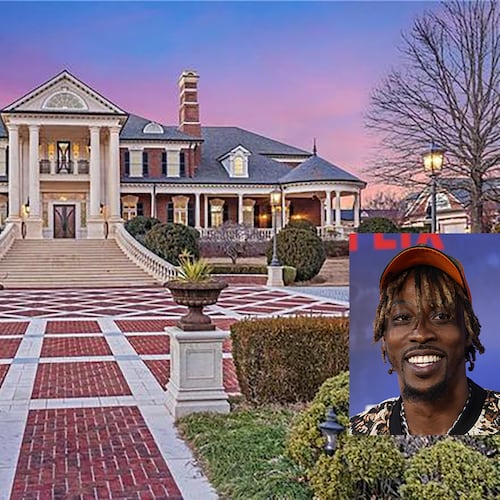The Noguchi Playscapes in Piedmont Park is at heart a playground, but it's also a major work of public art by a noted Japanese-American sculptor and designer, which is why its painstaking restoration was anything but child's play.
After nearly a decade of study, task forces, debate, negotiations, concessions, bidding and hard labor, the late modernist master's creation was rededicated Monday in a public unveiling ceremony featuring Mayor Shirley Franklin.
"It's been an unending process, but it's finally gonna end," Eddie Granderson, program manager of the city's Office of Cultural Affairs Public Art Program, sighed late last week.
As a parks department crew mowed grass high enough to make wheat bales and raked in two semitruckloads of wood chips, it was hard to comprehend how a serene space of simple geometric shapes, painted in shiny primary colors, could pose such a challenge.
But the crown jewel of the city's 350-work public art collection had become so tarnished from the wear of time and the abuse of vagrants and graffiti artists that some Midtown neighbors pushed to close it, others to banish it from its 1-acre site just north of the park's 12th Street entrance.
The city persisted, determined to undertake the $350,000 restoration of the sculptural landscape that Isamu Noguchi created for a $225,000 commission in 1975-76.
Before the work could begin, different stakeholders, sometimes with differing priorities and points of view — including the Piedmont Park Conservancy, Midtown Parents' Group and Noguchi Foundation — had to reach consensus. Even the divisions within the Department of Parks, Recreation and Cultural Affairs had to sort out turf issues.
Granderson felt some absolution when an appraisal of the city's public art inventory, completed in late 2008 by B. Fletcher & Associates of Boston, estimated the Noguchi Playscapes' replacement value at $3 million. And that was before the restoration that Granderson says has been as faithful as possible to the artist's intent and plans.
Noguchi was already a creative force of international renown when the High Museum of Art approached him with volunteer Frankie Coxe's idea for a playground that would also be a work of art. His credits ranged from the Billy Rose Sculpture Garden at the Israel Museum in Jerusalem to coffee tables and other "functional sculpture" for the Herman Miller and Knoll furniture firms that are still produced.
Fewer knew he had also designed a catalog of play equipment starting in the early 1940s and a series of playscapes, including one for the United Nations, that were never realized.
His notion of a playground was lofty. "It's a way of creating an ideal land on a smaller scale," he said. "The very restrictions make room for [the] more intense experience of childhood, where the world is never fresher, and where you have a kind of geometric connection with the world. I like to think of playgrounds as a primer of shapes and functions: simple, mysterious and evocative, thus educational."
He made several visits to the Atlanta site, where he planned a 20-foot-high spiral slide, an asymmetrical swing set, a concrete play mound, a circular sand pit, sets of play cubes and jungle gyms.
Along the Piedmont Avenue side, he designed a concrete wall with angled entrances illuminated with square imbedded lights. The wall, he wrote, provided "alternate possibilities of hide and seek"; the playground was "a continual invitation to adventure."
The ribbon-cutting honors, on May 1, 1976, went to two disparate dignitaries: Mayor Maynard Jackson and Mayor H.R. Pufnstuf, the then-popular Saturday morning TV character.
Heavy use and, later, abuse led to three restorations, mainly cosmetic, including one before the 1996 Summer Olympics. That did not slow the Playscapes' slide into its steepest period of decline.
A 2007 report from the project's architectural advisers, Jablonski Berkowitz Conservation of New York, noted that it was "under-utilized by the children for whom it was designed and over-utilized by disenfranchised members of the community who [see it] as a safe place to sleep, or ... ply their trade."
Separate from those concerns, the Midtown Parents' Group began petitioning the city in 1998 about play-safety issues, codes having toughened over three-plus decades. The city responded by widening a concrete portal where tiny heads might get caught, for instance, and raising the grade around the cubes so a fall wouldn't exceed 6 feet.
Jinger Simkins-Stuntz, vice president of the 200-family group, praises Granderson and other leaders not only for listening but for persevering.
"While the simple fundamental forms of the Playscapes often leave adults today undazzled in a world of McDonaldized and themed playgrounds, children immediately get it," notes Simkins-Stuntz, herself a sculptor and painter. "They get to really do what they often don't get a chance to do anywhere else in the urban landscape — slide from the treetops, swing into the clouds and conquer the king on the mountain."
About the Author
The Latest
Featured

